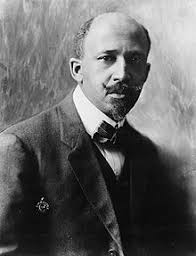By Nick Fouriezos
It’s the number that Brittany Barnett will never forget: 1374671. Seven digits assigned to her mother after she was arrested on a felony charge of assault and bail jumping related to her crack cocaine addiction.
The experience hit home as Barnett later changed career tracks, leaving accounting behind to study law at Southern Methodist University in Texas, a state that incarcerates more people than any other in the country. But since then, the former corporate lawyer has done more than she could have imagined for the plight of prisoners like her mom.
This spring, Barnett helped secure the release of 17 federal prisoners in 90 days under the newly passed First Step Act — a feat that drew national headlines because it was partially funded by Kim Kardashian West. It was the culmination of what she started in summer 2017 with the Buried Alive Project, a nonprofit working to eliminate life-without-parole sentences. “Life without parole is the second-most-severe penalty permitted by law in America, and we’re imposing this sentence on people with drug offenses. It’s mind-blowing to me,” Barnett says. “Reform, to me, is a fix. What we need is a fundamental shift to transform the system.”
Barnett has just finished a training event on compassionate release — where sick, elderly or disabled prisoners are set free early — for lawyers at the Washington, D.C., offices of lobbying giant Akin Gump when the Texas native lets her roots show. With a slight drawl, the 35-year-old spells out “B-O-G-A-T-A,” the 1,200-person town she grew up in, where the Rivercrest Rebels played high school football under a Confederate battle flag. “I can honestly say that growing up, I didn’t experience much racism,” she says. Instead, it showed up in less obvious ways, such as a childhood friend who got a life sentence for drugs when he was 23 years old. “We thought, Jeez, this is just East Texas. What I didn’t know is that he wasn’t an anomaly.”
The sweet tea and trap music lover’s goal today is to dredge up pro bono lawyers who are willing to work with some of the 1,600 people in the federal justice system who are serving life for drugs. Just getting that number was difficult enough: The Department of Justice wasn’t keen to share the information, Barnett says, and so her Buried Alive Project team had to piece together the records themselves. “If you don’t have a good counsel, it turns what is a difficult fight into one that is impossible. So the work she is doing is so important, just to ensure we have a fair and just system,” says David Safavian, deputy director of the Center for Criminal Justice Reform at the American Conservative Union.
The First Step Act is expected to lead to the release of more than 2,200 prisoners locked up for nonviolent drug crimes. But for many critics, it didn’t go far enough. While it eliminated so-called “stacked” sentences for future defendants, it didn’t reverse them retroactively for those currently in the system, meaning some people are serving up to 55 years for what may be only a five-year sentence today, Safavian says. To try to combat some of those challenges, Barnett recently launched the Third Strike Campaign, telling the stories of 13 prisoners who weren’t released under the First Step Act. “You have people spending life sentences today under yesterday’s laws,” Barnett says.
IT IS VERY IMPORTANT FOR LITTLE BLACK GIRLS IN BOGATA, TEXAS, AND OTHER RURAL AREAS, TO SEE THAT BLACK WOMEN ARE DOING THIS WORK.
BRITTANY BARNETT
The story of how Barnett and West joined forces begins with a critical race theory class that Barnett took at SMU — a class that she had to beg to be let into, because it was overbooked. “That was the only time I ever have” made an exception, says David Lacy, who was teaching the course. Barnett, studying to be a lawyer at the time, began investigating the human faces of a war on drugs that required 100 times as much powder cocaine as crack cocaine to invoke equal mandatory minimum sentences — a distinction mostly made along racial lines. “There were people talking about it 10 years ago, but it didn’t have nearly the momentum it has right now,” Lacy says.
It was in those studies that she met Sharanda Jones, the first woman serving life whom she would later help free through clemency in 2015, under the Obama administration. Soon after, she took on the case of Alice Johnson, a convicted drug trafficker and friend of Jones, whose moving video (below) reached West. The celebrity entrepreneur visited the White House in the summer of 2018 to discuss prison reform with President Donald Trump, and, a week later, the great-grandmother was granted clemency and released.
Still, West’s involvement didn’t come without controversy. As West helped fund a three-month sprint by Barnett and her business partner, MiAngel Cody, to release as many prisoners as possible earlier this year, criminal justice advocates complained about the attention she was getting — headlines implying West was becoming a lawyer and freeing these people herself, distracting from the years of work done by less-famous people on the ground. Amid those complaints, Barnett posted on Facebook that West had “linked arms with us to support us when foundations turned us down,” and that at the end of the day, “TWO Black women lawyers freed 17 people from LIFE W/O PAROLE sentences.”
Looking back at that moment, Barnett says she posted because she wanted to defend West against criticism. “People know that Kim’s not going to court and arguing in front of a judge,” she says. She understands that some people took that as her wanting credit, which she denies, before adding: “I stand on the fact that it is very important for little Black girls in Bogata, Texas, and other rural areas, to see that Black women are doing this work.” Even with many challenges ahead, Barnett has hope for one simple reason: The human narratives behind unjust sentences are starting to be told. “Being able to put a heartbeat to the number,” she says — a number just like her mother’s. Nick Fouriezos, Reporter
















































